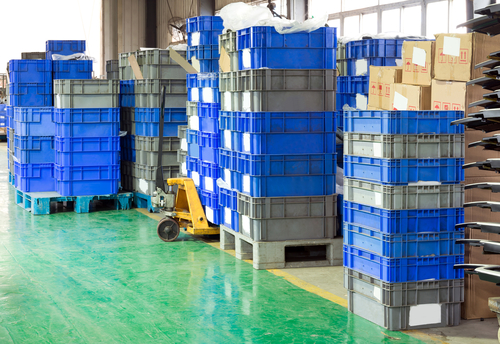Warehouses are having a moment as more people choose to shop online. There are now 18,182 private warehousing facilities in the U.S. as of 2018, according to the Bureau of Labor Statistics.
If you own an eCommerce shop, you may be thinking of investing in your first warehouse space to help with storage and distribution. Working out of your apartment, home or small business has its limitations. Renting a facility will give you more space to store and fulfill incoming orders. It also gives you a chance to move your merchandise closer to the consumer, helping you save money on shipping.
However, starting a warehouse comes with plenty of considerations. You need to choose a space that will ultimately benefit your business, not leave it drowning in bills. Inventory models for multi-warehouse systems, for example, offer great ways for businesses to come together to save money on using a warehouse. Use this information to get started so you can find the right home for your products.
How Much Space?
One of the first decisions you’ll need to make is how much space you’ll need to effectively store your products. Use these warehouse organization ideas to make the most of your space. You should have plenty of room to keep your inventory safe without overpaying for storage. Use stackable wire baskets and stack racks to get your inventory off the ground.
ORDER YOUR STACKABLE WIRE BASKETS TODAY!
You should also have room to assemble packages, load and unload your merchandise, as well as onsite features, such as a kitchen area, bathroom and proper ventilation. Avoid creating tight aisles and passageways that can diminish worker safety. If you and your team need to use a forklift, you should have plenty of room to move through the aisles without knocking into anything or anyone.
Location, Location, Location
Location is key when it comes to investing in a new piece of real estate. The goal is to bring your merchandise as close to the end user as possible so the delivery person doesn’t have to drive as far to deliver these packages.
SHOP FROM OUR ASSORTMENT OF PLASTIC REUSABLE PALLET CONTAINERS
Research your target audience and existing customers to find out where all these packages are going. If you cater to local residents, consider settling in a more urban area. If you ship products all over the country or the globe, find a location close to major highways, airports and cargo ports.
A few miles could make all the difference when it comes to your shipping expenses. Limit travel times as much as possible to save money. You can also set up a network of distribution centers to bring your goods even closer to your target markets. Consider renting out a few feet of storage space at a local business or existing warehouse instead of keeping everything at one central location.
Distribution and Accessibility
You’ll also have to figure out how you’re going to move your products to the end user. Many eCommerce companies will depend on 3PL providers like FedEx and UPS. Studies show they have been slammed with eCommerce orders in recent years, resulting in record-breaking revenue. But if you need to get lots of orders out the door in record time, this may not be the best option for your business. There’s only so much inventory you can add to one of their vehicles. Consider looking for a distribution company with the resources to meet the needs of your customers.
Make sure the space is accessible from the outside. There should be multiple loading docks for deliveries and drop-offs.
Containers for Shipping and Storage
Many eCommerce companies depend on cardboard boxes when shipping out their products, but this can result in excess waste and poor worker efficiency.
Invest in plastic, reusable pallet containers and totes instead. You can put these containers back into the supply chain once you’re finished with the order. Your employees won’t have to spend as much time breaking down boxes. Look for ways to move your products in bulk so workers don’t have to lift smaller containers by hand. Use durable plastic and metal containers to keep your goods safe during transit, especially if they are going overseas.
Starting a new warehouse is an exciting project, but no two facilities look exactly alike. Use these tips to create a space perfectly suited to your business.


